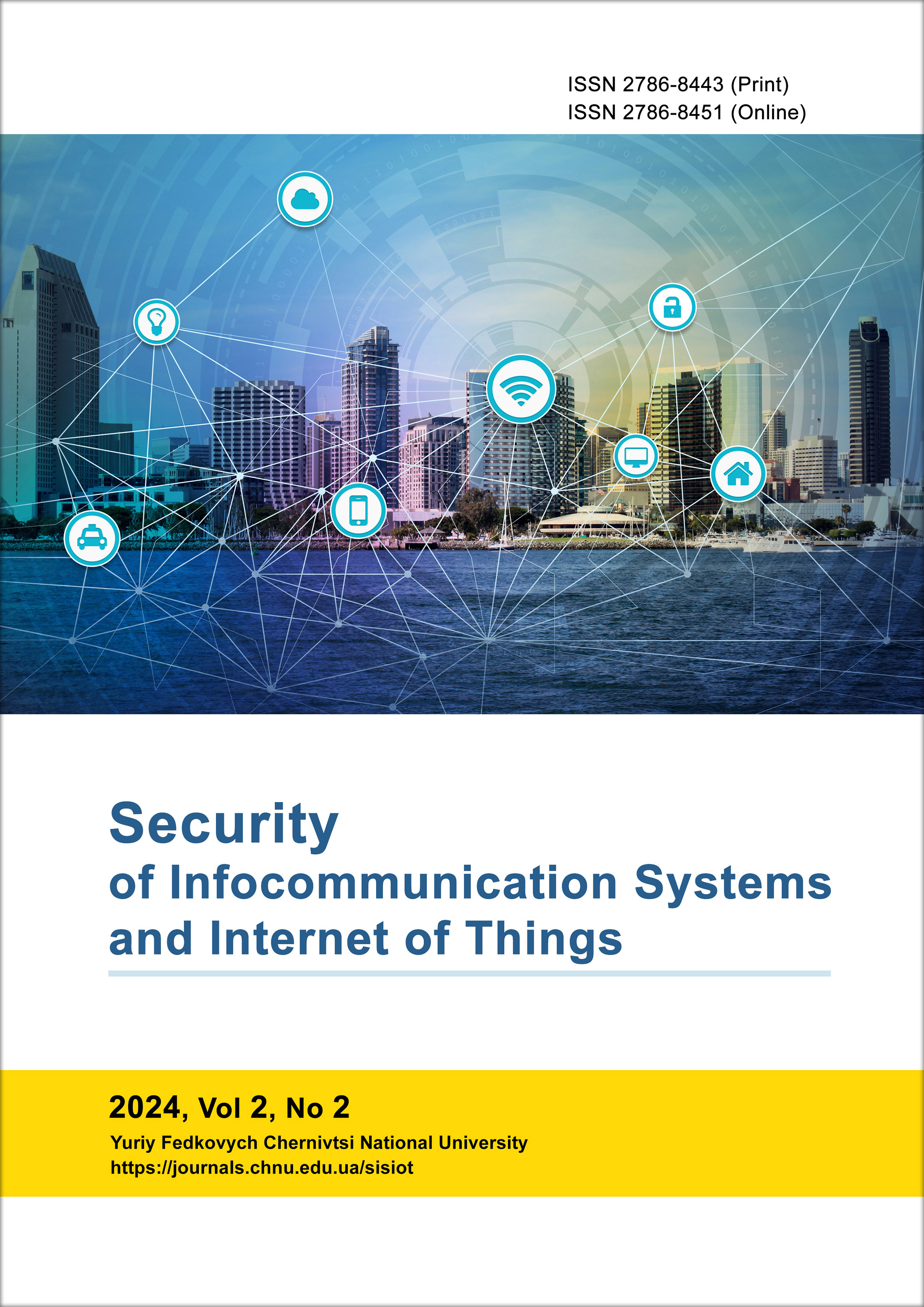Дослідження ефективності обробки числової випадкової послідовності клітинними автоматами хаотичного типу
DOI:
https://doi.org/10.31861/sisiot2024.2.02010Ключові слова:
програмна інженерія, криптостійкість, клітинні автомати, послідовності випадкових чисел, веб камераАнотація
На сучасному етапі програма, що генерує випадкові числа, ризикує бути зламаною через зростання обчислювальної потужності сучасних систем. Апаратна генерація базується на стохастичних фізичних явищах, але забезпечує низьку продуктивність та незадовільні статистичні параметри. У роботі пропонується використовувати обробку клітинними автоматами для покращення деяких статистичних параметрів послідовностей випадкових чисел, що згенеровані веб-камерою. У дослідженні наведено результати покращення статистичних характеристик послідовності чисел, отриманих зі звичайної веб-камери, щодо дотримання однієї з вимог криптостійкості: рівномірного розподілу елементів за значенням. Раніше було встановлено, що стохастичні процеси, що відбуваються в матриці веб-камери, викликають хаотичний розподіл значень у згенерованій послідовності випадкових чисел. Цю проблему можна подолати за допомогою обчислювальної потужності лінійних клітинних автоматів, особливо правил 30, 90, 105. 150. Ці криптопримітиви відомі як хаотичні, які споживають низьку обчислювальну потужність. Успішність застосування оцінювали у порівнянні з генерацією випадкових чисел програмним методом, зокрема класом SecureRandom мови програмування Java. Показано, що шляхом вибору кількох ітерацій можна отримати необхідний рівень рівномірності розподілу елементів послідовності за значенням. Оцінка величини рівномірності розподілу здійснюється швидко за допомогою статистичної бібліотеки мови програмування Java і може бути реалізована на звичайному смартфоні, операційній системі Android, без використання громіздких статистичних пакетів. Теоретично показано, що веб камера високої роздільної здатності може забезпечити продуктивність генерації випадкових чисел до 2 Гбіт/сек. Результати дослідження можуть бути використані при проектуванні апаратного генератора послідовності випадкових чисел.
Завантажити
Посилання
A. Jammi, Y. Raju, S. Munishankaraiah, and K. Srinivas, "Steganography: an overview," International Journal of Engineering Science and Technology, vol. 2, no. 10, pp. 5985-5992, Dec. 2010.
F. Martinez, "Attacks on Pseudo Random Number Generators Hiding a Linear Structure," in Topics in Cryptology, S. D. Galbraith, Ed., vol. 13161, Lecture Notes in Computer Science, Cham: Springer, 2022, pp. 145–168.
"Class SecureRandom," Java Platform Standard Edition 8 Documentation. [Online]. Available: https://docs.oracle.com/javase/8/docs/api/java/security/SecureRandom.html.
C.-H. Hsieh, X. Yao, Q. Zhang, M. Lv, R. Wang, and B. Ni, "BCsRNG: A Secure Random Number Generator Based on Blockchain," IEEE Access, vol. 10, pp. 98117-98126, 2022, doi: 10.1109/ACCESS.2022.3206450.
S. Park, B. G. Choi, T. Kang, K. Park, Y. Kwon, and J. Kim, "Efficient hardware implementation and analysis of true random-number generator based on beta source," ETRI Journal, vol. 42, no. 4, pp. 518-526, Aug. 2020, doi: 10.4218/etrij.2020-0083.
K. Park, S. Park, B.-G. Choi, et al., "A lightweight true random number generator using beta radiation for IoT applications," ETRI Journal, vol. 42, pp. 951–964, 2020, doi: 10.4218/etrij.2020-0119.
R. Li, "A True Random Number Generator algorithm from digital camera image noise for varying lighting conditions," in SoutheastCon 2015, Fort Lauderdale, FL, USA, 2015, pp. 1-8, doi: 10.1109/SECON.2015.7132901.
D. Dobrovolsky, D. Hanzhelo, H. Prokhorov, and D. Trembach, "Research the Level of Chaotic and Reliability in Webcam-generated Random Number Sequences," SISIOT, vol. 2, no. 1, p. 01004, Aug. 2024, doi: 10.31861/sisiot2024.1.01004.
D. Hanzhelo and H. Prokhorov, "Investigation of statistical characteristics of numerical random sequence obtained from a web camera frame," Herald of Khmelnytskyi National University. Technical Sciences, vol. 337, no. 3(2), pp. 46-51, 2024, doi: 10.31891/2307-5732-2024-337-3-6.
T. Toffoli and N. Margolis, Cellular Automata Machines, Cambridge, MA, USA: MIT Press, 1987.
Y. Dong, "Descriptive Statistics and Its Applications," Highlights in Science, Engineering and Technology, vol. 47, pp. 16-23, 2023, doi: 10.54097/hset.v47i.8159.
Опубліковано
Номер
Розділ
Ліцензія
Авторське право (c) 2024 Безпека інфокомунікаційних систем та Інтернету речей

Ця робота ліцензується відповідно до ліцензії Creative Commons Attribution 4.0 International License.









